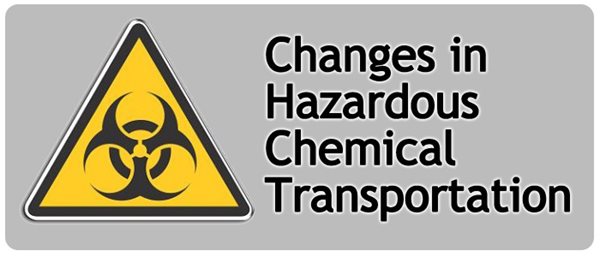An estimated 650,000 hazardous chemical products are used in the U.S. in more than three million workplaces, and hundreds more are invented every month. More than 30 million American workers are exposed to hazardous chemicals on the job daily. If you work with and/or transport hazardous materials you need to be aware of a change that is in process regarding the well-known Material Safety Data Sheets, more commonly known as MSDS sheets.

Chemicals are transported from state to state daily, and some are transported from country to country. All chemicals have a MSDS sheet, but most of the time we don’t see these documents unless you happen to be charged with their safe handling and storage. The “old” MSDS system has 16 sections but no requirement for uniformity from manufacturer to manufacturer as to what data is in each section, and some manufacturers even skip sections. In fact, some manufacturers don’t even provide complete contact information. While this system is certainly better than no system, it proves to be difficult to find necessary information quickly during an emergency.
The Occupational Safety and Health Administration’s (OSHA) Hazard Communication Standard (HCS) was implemented years ago to assist with communicating the hazards of chemicals. In 2012 OSHA updated its HCS to align with a new system called The Globally Harmonized System of Classification and Labeling of Chemicals, or GHS for short. This Globally Harmonized System is an international system for standardizing how chemicals are classified and how hazards are communicated. It was created to unify communication from all chemical manufacturers. Chemical manufacturers will now create Safety Data Sheets (SDS) that will have a consistent user-friendly 16-section format. All manufacturers must include the same information categories in the same sections, and sections cannot be skipped. Sections 1-8 contain information about the chemical, identification, hazards, composition, safe handling practices and emergency control measures. These sections provide the information that is typically needed quickly. Sections 9, 10, 11 & 16 contain technical and scientific information that is useful, but not typically needed in an emergency. Section 12 will contain ecological information. Section 13 will contain disposal considerations. Section 14 will contain transport information, and section 15 will contain regulatory information. Sections 14 and 15 will likely be of interest to those transporting chemicals in addition to the first eight sections. Click here for a full breakdown from OSHA.
In addition to creating a consistent format, the SDS sheets and container labels will now use pictograms that are consistent from manufacturer to manufacturer. These pictograms will help bridge the language gap with communication about hazardous chemicals.
Hopefully your chemical shipments will always be safe, but in the unlucky chance that you need to access information it will soon be more easily accessible. The last date for manufacturers to make the change to this system is June 1st, 2016. This should be a very positive change in the chemical handling and transport world. If you would like to learn more about this topic visit the UNECE website.
You can download revision 5 of the GHS handbook at this website. Although it’s a long publication (536 pages), it provides a thorough description of the GHS system.
Beth reference: https://www.teamrunsmart.com/articles/drive-smart/september-2013/meet-craig-mccue-owner-operator